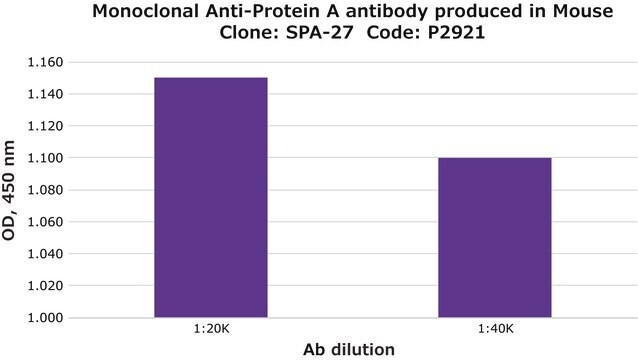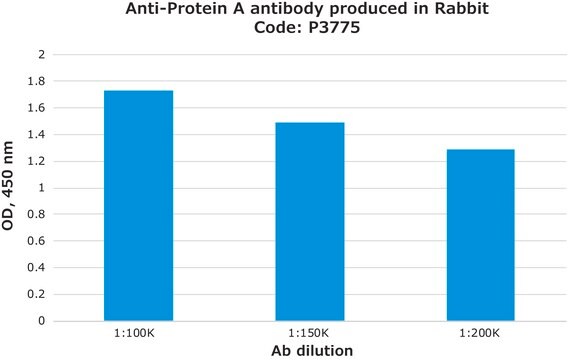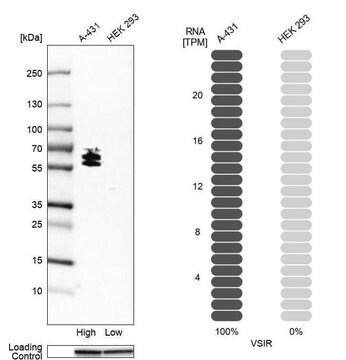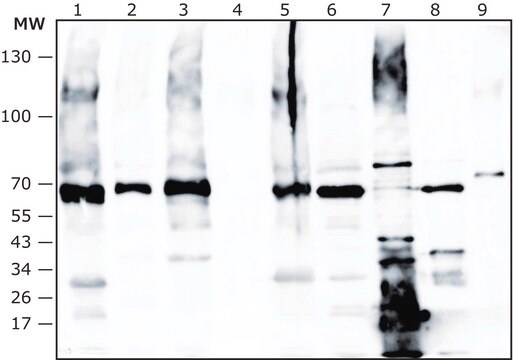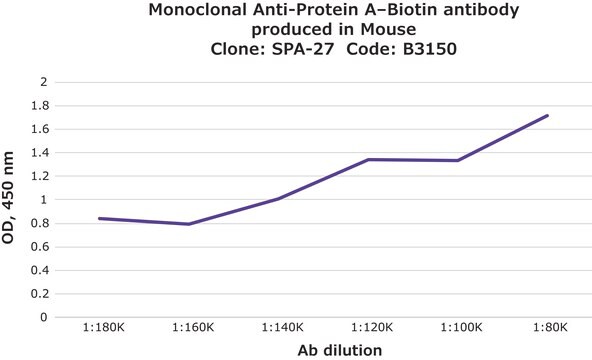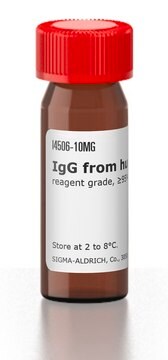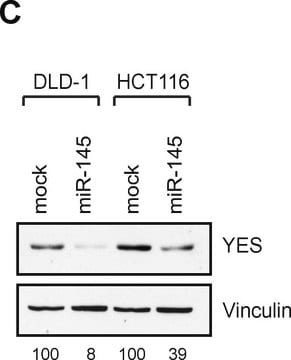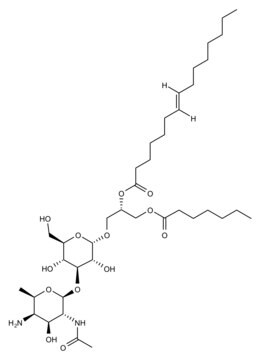Wichtige Dokumente
SAB4200745
Anti-Protein A antibody, Mouse Monoclonal
clone SPA-27, purified from hybridoma cell culture
Synonym(e):
Anti-IgG binding protein A, Anti-SpA, Anti-Staphylococcal protein A, Anti-Staphylococcus ayreus protein A
About This Item
Empfohlene Produkte
Biologische Quelle
mouse
Qualitätsniveau
Antikörperform
purified from hybridoma cell culture
Antikörper-Produkttyp
primary antibodies
Klon
SPA-27, monoclonal
Form
buffered aqueous solution
Mol-Gew.
~42 kDa
Speziesreaktivität
Staphylococcus aureus
Konzentration
~1.0 mg/mL
Methode(n)
dot blot: suitable
flow cytometry: suitable
immunoblotting: suitable
immunofluorescence: suitable
immunoprecipitation (IP): 2.5-5 μg/test using purified protein A from Staphylococcus aureus
indirect ELISA: 0.25-0.5 μg/mL using 10 μg/mL of protein A from Staphylococcus aureus for coating. To reduce nonspecific binding we recommend on detection using a secondary anti-mouse, F(ab’)2 fragment antibody
Isotyp
IgG1
Versandbedingung
dry ice
Lagertemp.
−20°C
Posttranslationale Modifikation Target
unmodified
Verwandte Kategorien
Allgemeine Beschreibung
Spezifität
Immunogen
Anwendung
Biochem./physiol. Wirkung
Physikalische Form
Lagerung und Haltbarkeit
Haftungsausschluss
Sie haben nicht das passende Produkt gefunden?
Probieren Sie unser Produkt-Auswahlhilfe. aus.
Lagerklassenschlüssel
12 - Non Combustible Liquids
WGK
WGK 1
Flammpunkt (°F)
Not applicable
Flammpunkt (°C)
Not applicable
Hier finden Sie alle aktuellen Versionen:
Analysenzertifikate (COA)
Die passende Version wird nicht angezeigt?
Wenn Sie eine bestimmte Version benötigen, können Sie anhand der Lot- oder Chargennummer nach einem spezifischen Zertifikat suchen.
Besitzen Sie dieses Produkt bereits?
In der Dokumentenbibliothek finden Sie die Dokumentation zu den Produkten, die Sie kürzlich erworben haben.
Kunden haben sich ebenfalls angesehen
Global Trade Item Number
| SKU | GTIN |
|---|---|
| SAB4200745-100UL | 4061833350973 |
Unser Team von Wissenschaftlern verfügt über Erfahrung in allen Forschungsbereichen einschließlich Life Science, Materialwissenschaften, chemischer Synthese, Chromatographie, Analytik und vielen mehr..
Setzen Sie sich mit dem technischen Dienst in Verbindung.